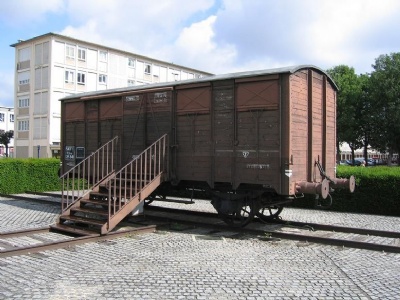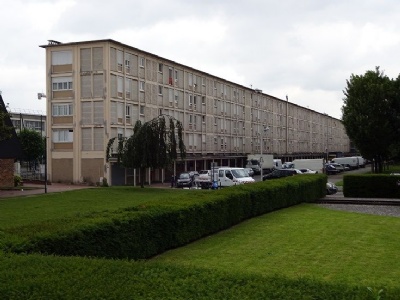Drancy
In a suburb of Paris called Drancy, the french police set up in august 1941 a detention camp for Jewish refugees arrested during round-ups or at random identity checks. The round-ups were a collaboration between the Germans and the French police. When the deportations of French jews to eastern Europe began in 1942, Drancy became the camp from which the majority of the jews were deported. To Drancy came Jews arrested from all over France. The first deportation left on March 27, 1942, when about 1,100 Jews from Drancy and Compiegne left for Auschwitz. Thereafter, until 31 July 1944, another 63 deportations to Auschwitz in particular departed. But three deportations went to Sobibor and Majdanek and one (convoy 73) to Kaunas and Reval (Tallinn). Convoy 73 departed on May 15, 1944, with just under 900 Jews and was re-directed for unknown reasons to the Baltics. First it ended up in Kaunas where about 600 Jews were murdered in Fort IX while the remaining, ca 300 Jews, were sent to Patarei in Tallinn where the majority were murdered at a forest cemetery (Metsakalmistu) outside Tallinn.
The Deportations from Drancy took place from two stations. Between March 1942 and June 1943 from Gare du Bourget, about 2,5 kilometers northwest of Drancy, and between July 1943 and August 1944 from Gare du Bobigny, about 2 kilometers southwest of Drancy. From July 1943 the Nazis took over the camp and SS-Hauptsturmführer Alois Brunner became commandant. In total, some 65,000 Jews were deported from Drancy to the extermination camps in Poland, of which about 63,000 were murdered. The remaining 10,000 Jews arrested by the Nazis were deported to Auschwitz from camps in Compiegne, Pithiviers, Beaune-la-Rolande, Angers and Lyon.
Current status: Preserved with museum (2016).
Location: 48°55'07.49"N 02°27'14.87"E
Get there: Commuter train to Bobigny – Pablo Picasso Station.
Follow up in books: Weisberg, Richard H: Vichy Law and the Holocaust in France (1998).



The Police barracks in which the Jews were interned still exists but are now residential buildings.
Gestapo’s representative for reference IV B4 in France was SS-Hauptsturmführer Theodore Dannecker. He met with French official officials and discussed the Jewish question and presented the german view of the jewish question. He demanded that the Jews living in France be interned in special camps. France was not interested in rounding up French jews but a compromise was reached in which they pledged to cooperate with the nazis in round-ups of non-french jews living in France. Therefore, French police began to round-up non-French jews as well as others who from a Nazi point of view needed to be imprisoned. Drancy is an example that cooperation occurred more often than we think between the Nazis and former official officials and authorities in parts of the states occupied by the Nazis.